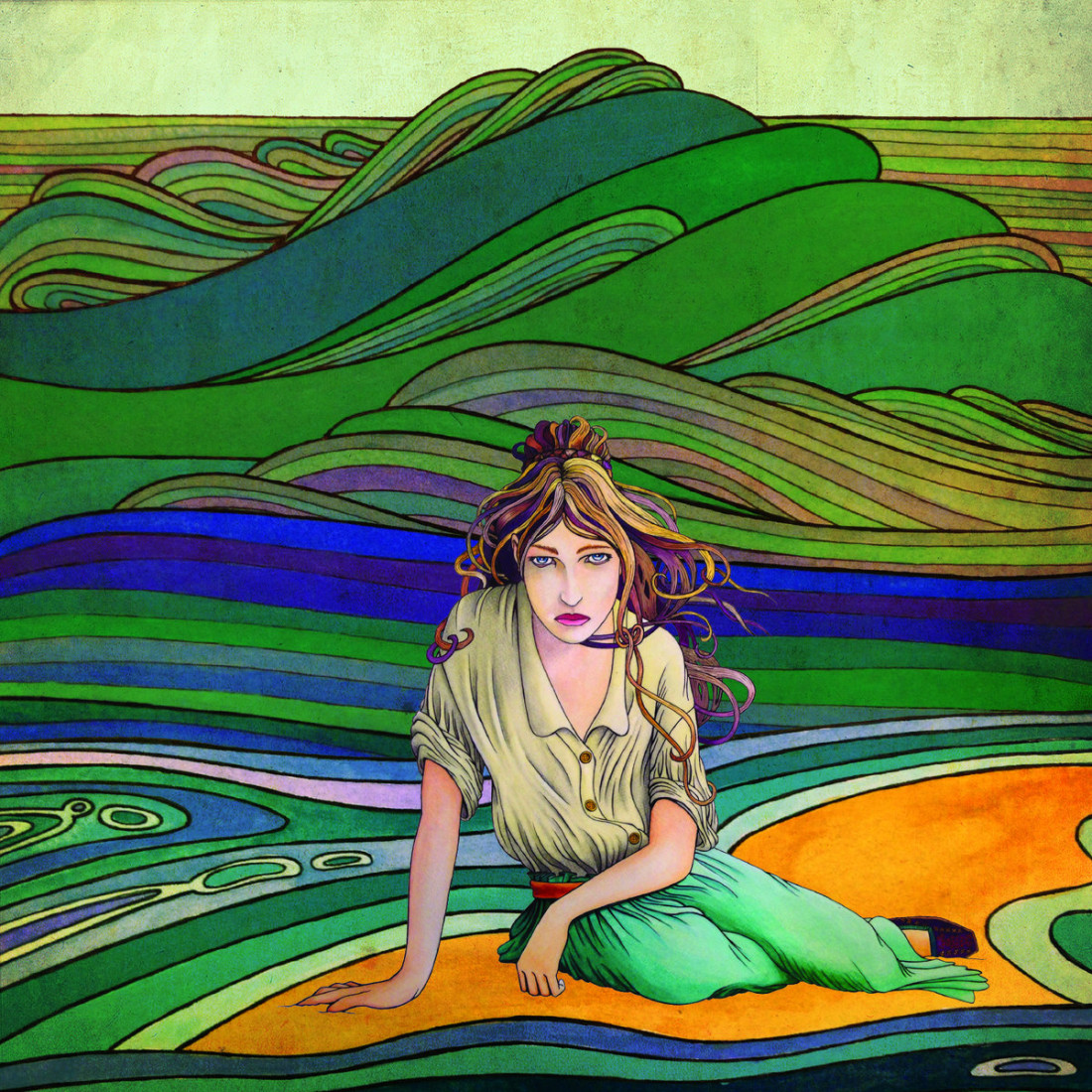A White Light that Sings, the recently released album from The Moon and You, is a kind of world within a world. A dream within a dream. Each of the 11 songs is its own delightfully weird fiction (or perhaps these songs are inspired by real events — the runaway friend, the pathological clothing borrower, a ne’er-do-well made over with an expensive haircut). What matters is the way The Moon and You core members, husband-and-wife musicians Ryan Furstenberg (vocals and guitar) and Melissa Hyman (vocals and cello), blend their voices and instruments and ideas into a comprehensive work.
That’s not to say the musicians’ individual personalities aren’t identifiable. They both have quirky senses of humor and their own takes on indie-folk. “Diamonds,” sung by Hyman, is a sultry Marilyn Monroe-meets-Madeleine Peyroux jazz offering. Folk-jazz, if that’s a thing. The song swings between the smoke and sparkle of a night club and the crackle and glow of a campfire; the clarinet and a chorus of muted horns could be right out of a Wood Allen film soundtrack.
There’s a kind of Mamas and Papas sensibility to “Ghost,” and the following track, “Autumn Days,” takes that folk-rock sounds into a more psychedelic realm. But the psyche-rock aspect is not from electric guitars and distortion. Instead, it’s the eerie, mountain blues captured in the melody, in the high, resonant strings and the mournful sweep of the cello, and mostly into the vocal harmonies that surround the listener like a cool, descending mist.
One of the album’s standouts is “Botton of the Road,” led by Furstenberg. It’s simple — just three verses and those are made up of repeated lines. But there’s so much heart and energy in the chorus: “Whooe hoo Whooe hoo / Sing it down / Whooe hoo Whooe hoo / I’m sorry I’m sorry.” The music — picked guitar, a loose and joyful cello part — matches the emotion of the vocal.
Hyman leads “Lion and the Rabbit,” the following track. It’s slow and careful start allows for shivery moments of sweetness and magic. The blending of the two voices on the chorus feels like a big deal. The introduction of a simple plucked-string melody, a few finger snaps and a jaunty whistle all elevate the song, but it returns, over and over, to its stripped intention. Hyman’s voice has a kind of purity, but the listener can sense her smile. Her vocal almost cracks in places. which only makes it better because it’s so authentic.
From the shimmying porch party of “Currituck County Moon” to the whimsical nocturne of “Austen’s Lullaby,” A White Light that Sings offers a glimpse into stories, moods and wonderful alternate realities — all set to an evocative score.



